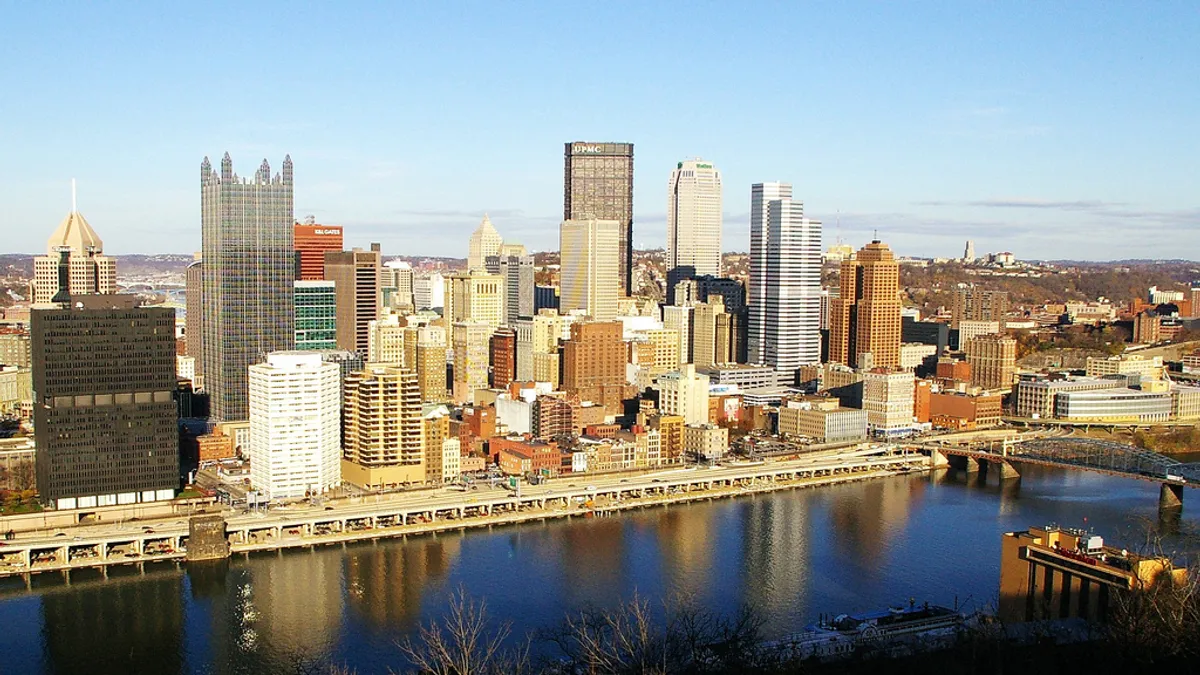Dive Brief:
- The Pittsburgh City Council approved a new climate action plan, laying out a goal to cut energy and water use 50% by 2030.
- The plan also calls for the city to turn its operations to 100% renewable energy and to adopt a 100% fossil fuel-free vehicle fleet. The city also said it would divest from fossil fuel companies.
- The climate plan sets a goal of an overall 20% reduction in greenhouse gases (GHG) by 2023, a 50% GHG reduction by 2030 and an 80% GHG reduction by 2050.
Dive Insight:
Despite — and especially since — being namechecked by President Trump as part of the reasoning for exiting the Paris Agreement, Pittsburgh has been vocal in its commitment to climate action and green energy. "The story of Pittsburgh's resurgence really began around the need to reduce pollution and improve our air quality," said Chief Resilience Officer Grant Ervin in a 2017 interview with Smart Cities Dive. That need included revitalizing former industrial sites with green spaces, reducing pollution from the city’s coal and steel operations and prioritizing alternative transportation.
The plan also built on strong public support; the city council voted 8-0 to approve the climate goals, with one abstention. City leaders had more than 100 workshops and public events over the last three years to gather input on the plan, with representatives of more than 90 organizations, businesses, nonprofits and government agencies involved. The interest in public-private partnerships can help ensure the goals don’t just stay on the page and actually become reality.
As the federal government steps back on climate action, states and cities have begun filling the gap, setting ambitious emissions reduction goals and commitments to clean energy. The We Are Still In coalition has some 200 mayors vowing to keep up the goals of the Paris climate accord, and last month launched the We Are Taking Action initiative to push local climate action. While city leaders have a lot of leeway in implementing direct changes in their area and represent a broad swath of the country, it remains to be seen if those efforts can make up for any pollution reduction being lost from the federal level.










